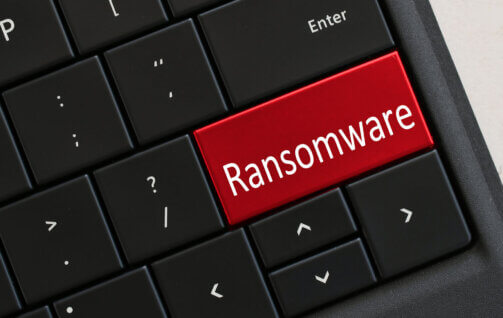In recent years, cybercriminals have been getting smarter and more dangerous. Nowadays, they are using AI technology and other tools to wreak havoc on businesses.
The cyber security threats businesses face don’t just continue to grow in number. They are also becoming increasingly sophisticated because criminals leverage advanced technologies and exploit new social engineering vulnerabilities to gain access to critical data.
From the acute shortage of skilled cybersecurity professionals to the meteoric rise of AI-driven attacks, the challenges are becoming increasingly complex and malicious. Businesses and IT departments must be adaptive and forward-thinking, and always stay one step ahead of threat actors to safeguard digital assets.
As business processes and devices become more interconnected, threats are evolving, from ever-dangerous phishing attacks to the emerging challenges posed by IoT devices and cloud security.
So, let’s unpack the top 10 cybersecurity threats and understand how businesses can build up their defenses against the cyber challenges of today and tomorrow.
1. Cybersecurity Skills Crunch
The cybersecurity skills crunch reflects a growing concern where the demand for skilled cybersecurity professionals outpaces the supply chain attacks.
As cyber ransom threats evolve rapidly, businesses struggle to find top experts who can effectively counter these financial threats. This shortage not only leaves companies and organizations vulnerable but also stresses existing security teams, potentially leading to overlooked vulnerabilities. Short-staffed businesses are the most vulnerable and the focus of cybercriminals, who are happy to take advantage of shortages in IT departments.
To answer this skill crunch, businesses are turning to automated tools and legitimate software solutions to monitor their way to security. In addition, many companies are outsourcing their cybersecurity department to managed IT services companies like Corporate Technologies for maximum monitoring and real-time threat detection and prevention against ransom attacks.
2. AI-Driven Attacks
AI-driven attacks represent a sophisticated security cyber threat where hackers use artificial intelligence programs to automate and enhance their cyber ransomware attacks. These smart AI program capabilities can be used to create more convincing phishing scams, identify multi-factor authentication vulnerabilities and weak passwords at a faster rate, and even develop malicious software or install malware programs that adapt to defensive measures. All this makes traditional security measures less effective.
Cyber security specialists must anticipate these cyber threats and be prepared for even more advanced and multifaceted attacks.
3. Phishing Attacks
Phishing attacks continue to be a prevalent threat as attackers become more adept at crafting deceptive phishing emails and messages. These attacks can trick individuals into providing sensitive information or downloading dangerous types of malware.
The sophistication of these attacks is often enhanced by AI tools that manage to target efficiently and effectively vulnerable people and business segments. Phishing attacks include spear-phishing, which aims at specific individuals or companies and poses a significant risk to organizational security.
To prevent phishing attacks, businesses must train their workforce to be extra vigilant and not trust emails and other messages, however appealing they might sound.
4. IoT Cyberattacks
As the Internet of Things (IoT) grows, so does the attack surface for businesses. IoT increases the vulnerabilities because more devices, tools, and apps are interconnected, opening up areas where security might be weak. Most IoT devices advertise their user-friendliness. Yet, it’s that very feature that lets cybercriminals gain access to networks.
IoT cyberattacks target connected devices, which often lack strong security features. A chain is only as weak as its weakest link, so hackers can enter your network from a poorly protected device such as a Smart TV, a fridge, or even a robot vacuum. Such attacks can lead to unauthorized access to business networks, sensitive data and assets breaches, and even operational disruptions, especially in industries relying heavily on IoT devices.
5. Less than Zero-Trust
The latest concept of “less-than-zero-trust” highlights the challenges businesses face in implementing comprehensive zero-trust security architectures.
Zero-trust is a security model that assumes there is no area within which a network can be assumed to be safe. Therefore, it requires strict identity verification for third parties and devices trying to find access to sensitive resources. This step protects networks from cybercriminals and attacks.
The problem with Zero-Trust is that digital business networks are becoming more complex with remote workers, IoT devices connected to the mainframe, and various suppliers. The perimeter that’s assumed to be safe and protected can easily be targeted and pierced, and damage networks that were once thought to be secure.
In 2024, Zero-Trust will evolve into Less-Than-Zero-Trust: an adaptive, holistic cybersecurity approach that uses AI-powered real-time authentication and activity monitoring to secure your network.
6. Disinformation campaigns
Cybercriminals often use AI in conjunction with social media and other communication attempts to discredit a company and spread false information.
Such disinformation web campaigns aim at spreading negative information and damaging a company’s brand and credibility. The impact of such disinformation campaigns is amplified by the interconnected nature of the internet and social media platforms, where information can spread rapidly and reach large audiences. This makes it challenging to control or counteract false narratives once they gain traction.
Businesses must learn to stay alert and ahead of threats of disinformation campaigns. Steps include monitoring social media and online platforms for false information related to the company, training employees to recognize and report potential trick disinformation, and developing crisis communication strategies to respond quickly and effectively to mitigate the impact of such campaigns.
In collaboration with cybersecurity experts and public relations teams, companies must identify the source of the disinformation and address it at the root.
7. Third-party Contractor Breaches and Supply Chain Breaches
Modern businesses rely on external parties to fulfill their projects. Supply chain contractor breaches occur when cybercriminals target less secure elements in a company’s supply chain. If cybercriminals can find a weakness in third-party contractor networks, they can breach these to gain access to the larger mark that was their goal all along.
By exploiting such vulnerabilities, attackers can gain access to a large company’s network. This type of common cyber attack underscores the importance of security networks and systems not only within one’s business but across all partners and suppliers. Businesses must assess and manage the cybersecurity supply chain risks of their external partners as critical steps to protect themselves.
8. Cloud Security Challenges
As businesses increasingly rely on cloud services, cloud security challenges become more important.
These challenges include ensuring data privacy, securing data transfers, and protecting against unauthorized access to sensitive content. Cloud storage is hugely practical, but businesses must be aware of sensitive information being stored in these platforms, as they often become targets for cyber attacks. To safeguard their data, documents, and files from data breaches, loss, and attacks, businesses must balance their assets’ security with the convenience of cloud-based platforms.
9. Insider Threats
One of the greatest cybersecurity threats, insider threats arise from users within the organization, such as employees or contractors, who intentionally or unintentionally compromise security.
To prepare for unintentional cyber attacks, businesses must train their employees and workforce to be prepared, vigilant, and careful. Due to the shifting pattern of workforce relations, IT departments must extend training to remote work contractors and anyone working with and within the business.
As for intentional threats, it can be challenging to detect data theft and sabotage. Businesses need to implement widespread access controls, monitoring, and employee awareness training to mitigate these cyber security risks. They must also provide access on a need-to basis, limiting it to the users who actually need it.
For maximum control against internal intentional threats, the IT department should work alongside the HR department to scan employee behaviors.
10. Ransomware
Ransomware remains a critical threat, with attackers locking businesses out of their systems and demanding payment for release.
The evolution of ransomware tactics, including double extortion schemes, poses a significant challenge. Businesses must ensure regular data backups, strong security systems, and incident response and protection plans to counter these attacks.
All Businesses Need Cybersecurity. They Need Corporate Technologies
In the ever-evolving landscape of cybersecurity, businesses face a relentless threat. The ability of cybercriminals to exploit vulnerabilities and potentially steal sensitive information makes it imperative for businesses to stay ahead in the cybersecurity game.
Cybersecurity is no longer a domain confined to IT departments: it is now a central aspect of overall business resilience and strategy. This reality demands a culture of security policies throughout global organizations, continuous investment in up-to-date security technologies and critical systems, and commitment to best practices in detection, response, and risk management.
The interconnected nature of these threats highlights the importance of collaboration — both within the organization and with external partners, including cybersecurity firms, regulatory bodies, and law enforcement.
The threats are numerous and continue to evolve. However, with awareness, strategic planning, and proactive action, businesses can defend themselves against social engineering attacks and thrive in an increasingly digital future.
Safeguard your system or network, especially sensitive financial information, with Corporate Technologies — a stalwart partner committed to fortifying your digital defenses and ensuring the security of your invaluable assets. Embrace this challenge with resolve and foresight with Corporate Technologies by your side!
In 2023, ransomware continued to be one of the most formidable challenges in the cybersecurity landscape. This form of cyberattack involves encrypting a victim’s data and demanding payment for its release. In the past years, the scale and impact of ransomware have evolved in sophistication and scale to affect businesses, governments, and individuals alike.
Let’s take a look at how damaging and yet widespread ransomware has been so far this year.
The Current State of Reported Ransomware
Recent case studies and ransomware statistics paint a concerning picture of ransomware’s impact in 2023. More businesses are affected across all industries, from the healthcare system to the supply chain industry.
- According to Statista, about 70% of businesses will suffer one or more ransomware attacks in 2022 and the trend will increase in 2023 and beyond.
- The number of reported ransomware attacks in the U.S. grew by 47% between January 2020 and December 2022.
How much is ransomware costing businesses?
- The number of ransomware attacks increased by over 37% in 2023. The average company ransom payment exceeded $100,000 with a $5.3 million average demand.
- According to Statista, 71% of the infrastructure of global businesses was impacted by ransomware gangs. A total of 62.9% of the ransomware victims paid the ransom to recover their data and use of their networks and devices.
- According to Cybersecurity Ventures, global ransomware groups are expected to increase by 30% year-over-year over the next decade. The cost of ransomware is estimated to exceed $265 billion annually by 2031, with at least one ransomware attack happening every two seconds. This shows the scope and damaging effects of businesses affected by ransomware and cybercriminals.
Which industry is most affected by ransomware?
- Blackfog reports that education, government, and healthcare are the top three sectors to experience a ransomware attack in 2022. This makes sense as these industries work with sensitive data services and personal information that must remain private and protected. Cybercriminals target these industries because they know they can’t afford for the sensitive information to be lost or publicized. Organizations have to pay the ransom demands to protect their assets and reputation.
- An IBM report showed that for the last 12 years, the healthcare system had the greatest average cost of ransomware for any industry at $10.1 million per incident response.
- According to a Trend Micro study:
- 57% of interviewed healthcare organizations reported a ransomware payment attack within the past three years.
- 25% had to stop operations due to the attack, which meant they couldn’t work, function, and make money while trying to get their network and financial services back in place.
- A worrying case study came from Verizon regarding ransomware in the education industry:
- The education sector accounted for 30% of the data breaches in 2022.
- There were 1,241 data breach incidents.
- 282 of the affected businesses confirmed they lost data or experienced exposure.
- 75% of the violations came from external cybercriminals. 25% came from internal threats which points to how internal negligence or deliberate disclosure can be highly damaging.
How prepared are small and medium businesses against ransomware?
Small businesses are particularly vulnerable. A study reported by UpCity says only half of United States small businesses have a cybersecurity plan against a potential ransomware group attack. This makes them particularly exposed to cyber hackers, which can seriously damage their networks and operations. They can lose data and sensitive information and a ransomware event can damage their reputation with their customers.
Other statistics are just as worrying:
- According to Verizon, of 832 ransomware attacks, 130 confirmed data loss. Businesses trying to recover lost data direct money and efforts that would be otherwise used for more profitable aims.
- An average business needs 22 days to recover from a malware attack. That means immense income loss and a disruption that is far bigger than the actual ransom paid.
- Almost half of the businesses hostage to ransomware paid to prevent revenue loss:
- 41% of the rest paid ransom to make the recovery process faster, so they would lose less.
- Of those with reported lost revenue, two-thirds said they lost between $1 and $10 million.
- Over one in two companies that experienced ransomware payment discovered corrupted data after erasing the encryption.
What are the most common cybercrimes?
The most common cybercrimes across the globe include:
- Penetrating corporate networks
- Stealing data for ransom
- Gaining unauthorized access to sensitive information like names, credit card details, passwords, PINs, health details, addresses, and terms of service.
- Encrypting devices which means their legal users can’t use them anymore. Once the ransom is paid, hackers remove the encryption.
Key Trends and Developments for 2023 and beyond
Several key ransomware trends have emerged in the ransomware landscape this year, which show how the cybercriminal world is evolving.
Cybercrime as a business
Cybercrime has become a business that is adapting to making money out of damaging networks and stealing organizations’ data and information.
Threat actors often subcontract their work and pay the subcontractor with a percentage of the ransom. This new practice has been called ‘Ransomware as a Service’ (RaaS).
RaaS involves cybercriminals selling or renting ransomware tools necessary to penetrate a network, to others. This means the world of cybercrime is widening. An increasing number of dangerous players can wreak havoc on businesses’ processes, as they don’t need to develop the necessary tools — something that has traditionally required time and money. Instead, they buy or rent them. This is one reason why cybercrime has increased both in scope and numbers.
Double extortion
‘Double extortion’ tactics are becoming increasingly prevalent, where attackers not only encrypt data but also threaten to release it publicly unless the ransom is paid. ‘Double extortion’ aims at making sure businesses have no other solution but to pay the ransom.
Sensitive industries targeted by ransomware attacks
Another notable trend is the targeting of specific industries, such as healthcare and education, due to their critical need for immediate data access and thus a higher likelihood of paying the ransom.
The Impact on Businesses and Individuals
The impact of ransomware extends beyond financial losses due to the ransom payments.
For individuals, ransomware attacks can result in the loss of sensitive personal data and significant financial strain.
Businesses, however, also face operational disruptions, loss of reputation, legal repercussions, and the cost of recovery and strengthening cybersecurity post-attack.
Preventative Measures and Best Practices
In combating ransomware, proactive measures are key.
This includes regular backups of critical data, employee training to recognize and avoid phishing attempts (a common vector for ransomware), and implementing sustained security solutions like antivirus software and firewalls.
Businesses should also set up a response plan for potential ransomware attacks, emphasizing rapid detection and containment.
Protect Your Business with Corporate Technologies
Ransomware in 2023 represents a complex and evolving threat affecting millions of people but is not insurmountable. Staying informed about the latest technology trends and top ransomware variants and their tactics is essential for effective defense and adopting comprehensive security measures. Individuals and organizations can significantly reduce their risk of falling victim to many ransomware attacks. A united front integrating technology, law enforcement, and strategic cybersecurity measures is key to mitigating the damage caused by these insidious attacks on our systems.
Safeguard your system or network, especially sensitive financial information, by letting Corporate Technologies fortify your digital defenses and ensure the security of your critical assets. Contact us today to find out more!





